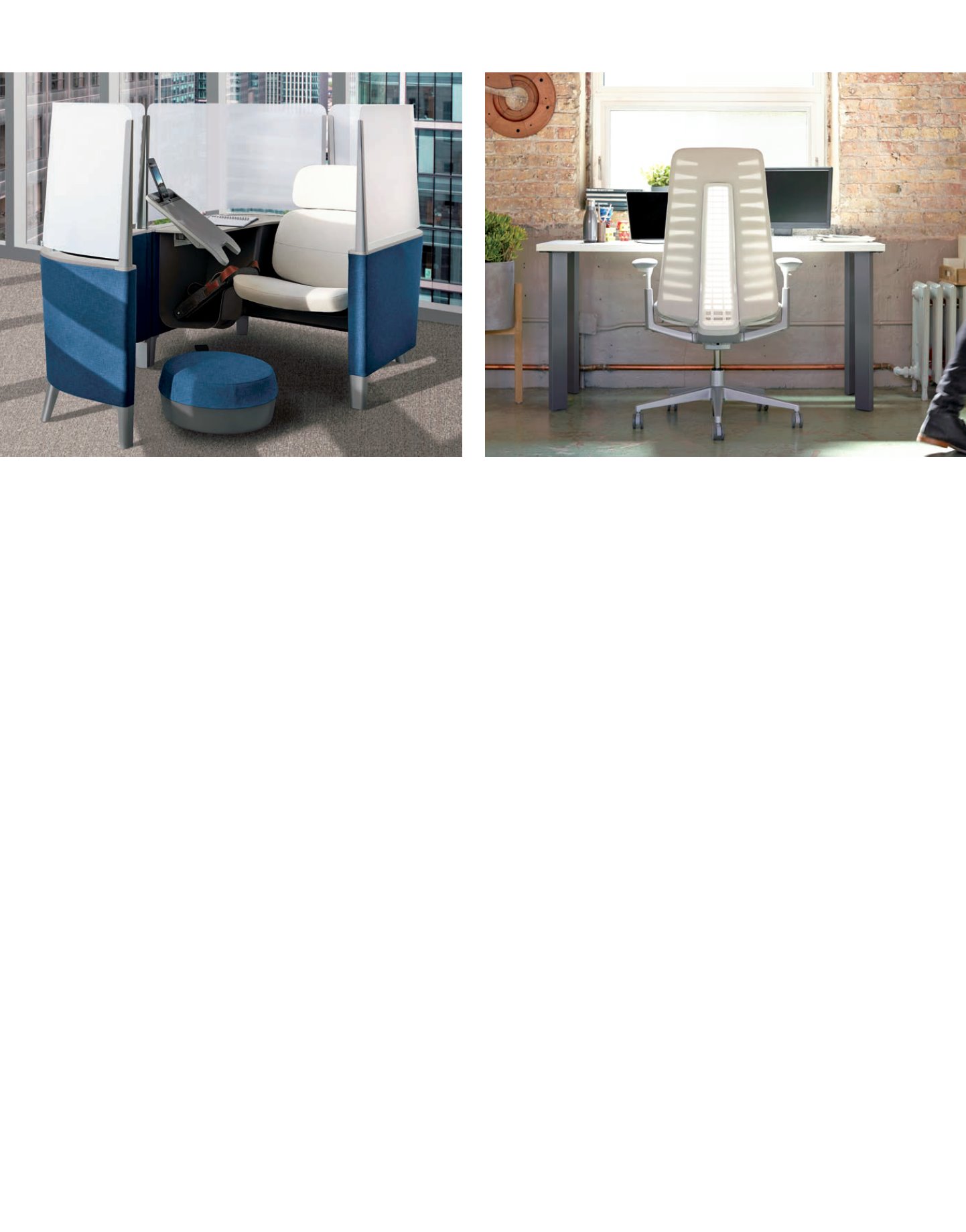

22
Officelayout 169
aprile-giugno 2017
changes since the launch of the Aeron back
in 1994, Herman Miller has decided to
redesign this iconic chair, applying the
principles of cross-performance design and
the latest research on ergonomics, new
materials, new technologies and production
techniques. The objective is a chair that can
respond to a range of different functional
needs, offering great freedom of movement
and activity in teamwork settings or other
operative areas. The technological progress
can be seen mostly in the composition of
the fabric of the seat and back, 8Z Pellicle,
a high-tech material made with five
monofilaments, each with different
properties, to create zones of variable
stiffness to adapt to the anatomical
characteristics of the human body. Another
important step forward lies in the use of
CAD 3D modeling, permitting the redesign
of every part with the exception of the seat
and back frame, for a slimmer silhouette
and improved support, testing the pressure
points of the seat and back.
It is important, however, for the values of
the more highly evolved product to be
communicated to the market in the correct
way – Colombo concludes. – As
manufacturers we have to explain the new
contents of research, to keep the focus on
the importance of careful choice, so that
seating is not experienced as a mere
commodity, but as a tool that assigns value
to people in the company.”
Another major theme is the possibility of
personalizing seating adjustments, with an
eye on user-friendly simplicity. While in the
1990s mechanisms were displayed in the
design, to convey a sense of technological
evolution and progress, today the accent is
on a discreet presence of mechanisms. This
is for two reasons. First, lightness is a key
factor to make it easy to move seats
around, shifting rapidly from concentration
to teamwork. The desire for lightness also
reflects a stylistic trend towards minimalism
and simplification. Second, simplification
also aims at making usage easier, offering
an effective, easily adjusted or even self-
adjusting tool, featuring synchro
mechanisms, as emphasized by the
designer Alberto Meda, who works with
leading companies like Vitra and Alias:
“When you manage to achieve physical and
visual lightness with one solution, you
contribute to improve the atmosphere and
clarify of a place. The goal of design is to
grant users more freedom while sitting,
creating a chair that does not limit
movement but guarantees flexibility of use,
and an easy shift from work to relaxation.
You can work on the integration of functions
and reduction of the number of parts, to
achieve simplicity of form and use at the
same time. The idea is to make the
kinematics and dimensions of movement
always vividly present, but without drawing
attention to the mechanical aspects. So we
want structures that combine plastic
materials with textile elements, which act
together to give the object the right
flexibility.
Personalization of settings can be made
automatic, because offices are now places
where people do not necessarily stay
seated in a single spot. In the latest seat I
designed for Vitra, the AM chair, we have
used a mechanism that adjusts back
support based on personal weight, while
offering the possibility of more precise
manual adjustment.”
At the same time, the distinction between
different seating types has gotten blurry.
La seduta
Fern
di
Haworth
ha un bordo morbido e flessibile che non limita i
movimenti della persona. Il design con meccanica integrata rende il prodotto
più discreto e con un appeal vicino alla casa
Brody WorkLounge
di
Steelcase
è più di una seduta, è un ambiente di lavoro
in grado di garantire una corretta postura al corpo grazie al controllo e alla
possibilità di movimento di ogni elemento, dalla seduta al piano di appoggio,
con una contemporanea attenzione verso la privacy
New work seating









